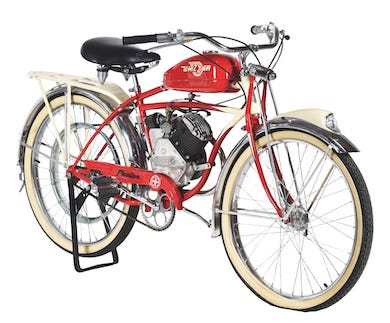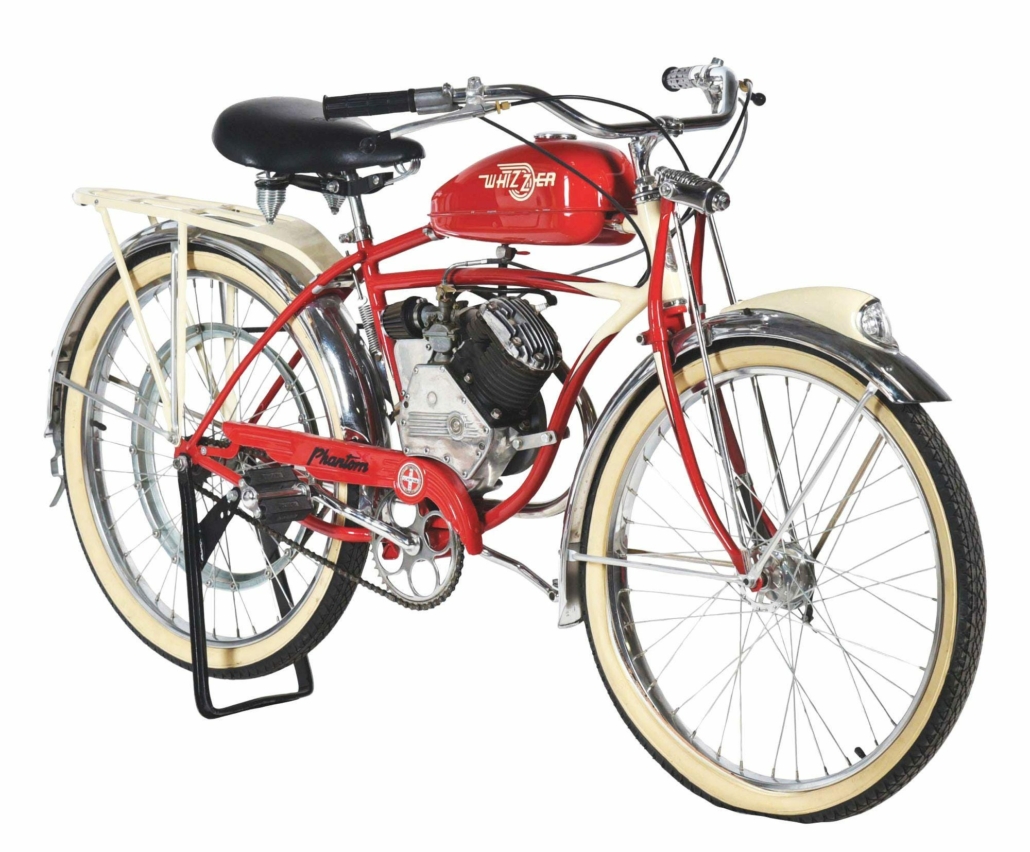
NEW YORK — Bicycles have been around since the 1860s and one of the industry leaders for decades was Schwinn. German immigrant Ignaz Schwinn and Adolf Arnold worked together for several bicycling companies before launching their own business in Chicago in 1895.
Bicycling had mostly been a leisure pursuit for the wealthy up until then but the advent of mass-produced bicycles opened up the market and by the turn of the century, there were about 300 American companies making bicycles. In Chicago alone, there were about 30, including Schwinn.
Schwinn bicycles were lightweight but well made. They quickly found favor, becoming a rite of passage for many children in America, especially those who grew up between the 1940s and 1980s.
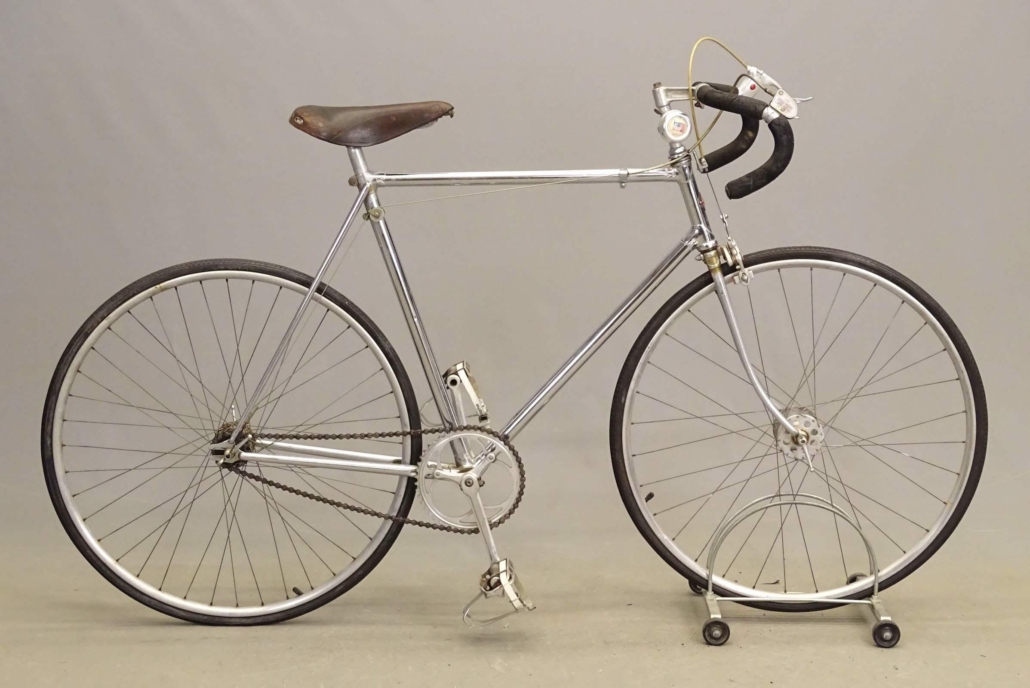
Over the years, Schwinn bicycles have made history books and gained a foothold in American culture. In 1896, Marshall Walter “Major” Taylor rode one in a race, making him the first African American cyclist to become a world champion. In 1941, French racer Alfred Letourner broke the speed record for fastest mile on a bicycle, achieving 108.92 mph while riding a Schwinn Paramount bicycle.
After the introduction of cars, bicycles came down in price but lost some of its luster as a transportation mode for adults, so Schwinn focused on building sturdy kids’ bicycles for much of the ’20s and ’30s. “With the popularity of the automobile booming and the bicycle waning, the bicycle industry changed their core demographics targeting younger Americans while also completely redesigning the bicycle,” says literature from the Bicycle Museum of America.
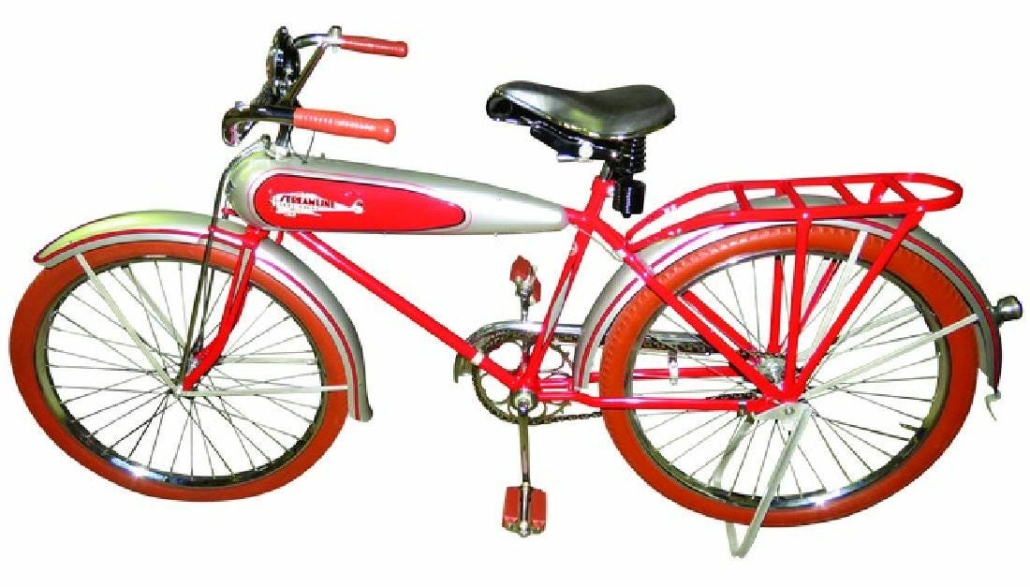
In the 1930s, during the peak of the Art Deco era when the modern aesthetic took hold, Schwinn again began producing lightweight bicycles for adults. Their look favored the streamlined look that was now popular. In fact, it introduced a balloon tire model called the Streamline that blended bicycle and aviation design. In 1938, it added three new models: the Paramount, the Superior, and the New World. Schwinn engineers became renowned for their innovations, such as mudguards, a cycle lock, a cantilever frame, and a “spring fork.” The bikes often boasted bright colors and extensive use of shiny chrome.
By the late 1940s, the Black Phantom was one of the company’s most desirable balloon-tire bicycles. Schwinn’s “it” bikes of the 1950s included flashy models with chrome fenders, head and tail lights and whitewall tires, such as the Panther, Hollywood, and Starlet. The models that came out in 1959 marked a high point for Schwinn with nice new styling, from the debut of “S” seats to white handlebar grips with a colored-in teardrop. By the 1960s, Schwinn’s design concepts changed again. “Muscle-car style and bicycle design are combined to create Schwinn’s most celebrated model of all time: the Sting-Ray,” says the company history on Schwinn’s website. Boasting high-rise handlebars, a banana seat, stick shift, and a racing tire, the Sting-Ray was an immediate hit. They sold more than 45,000 Sting Ray’s within a year of the model’s debut, which led to the debut of the Sting-Ray Krates line, circa 1968-73.
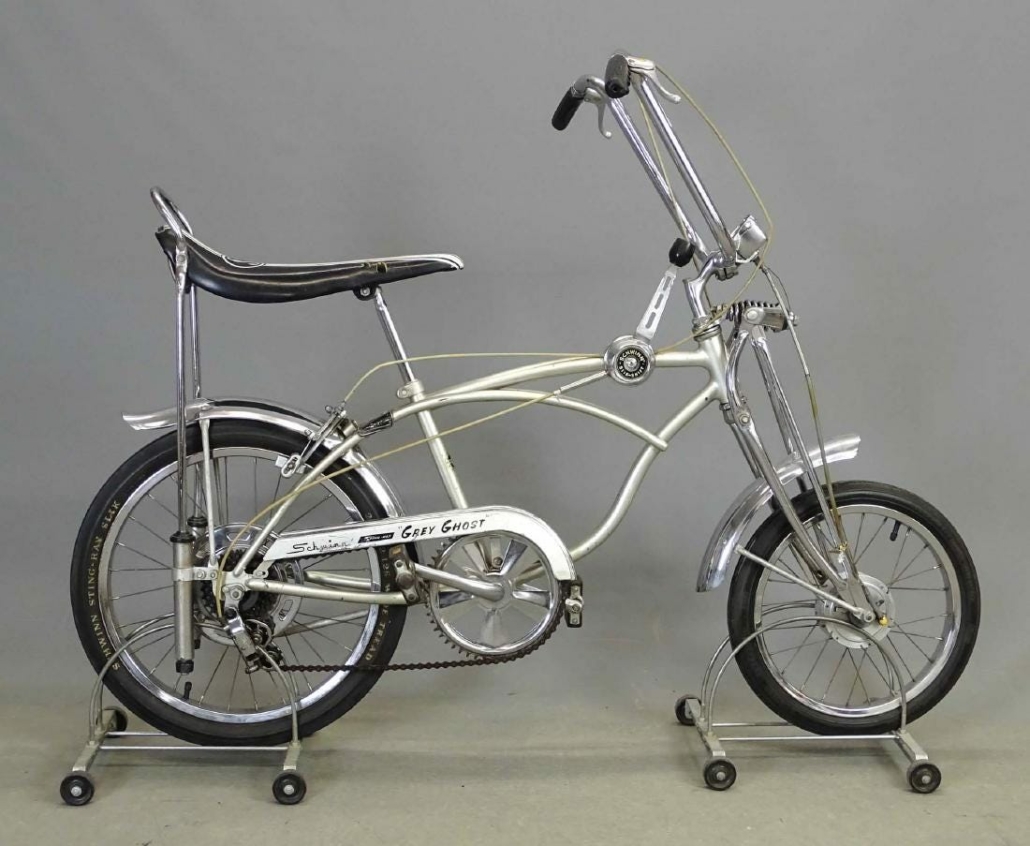
“The Krates took over the bike world in 1968. They were without question the coolest bikes on the block,” said Tommy Sage Jr, Head of Morphy Auctions’ Toy Division. Bright colors were the standard here and its inaugural product line featured three models: the Orange Krate, Apple Krate, and Lemon Peeler. Other colors were added in the years to follow.
Copake Auction has run a specialty bicycle auction every spring since 1991. Owner Mike Fallon notes that bike collectors “love details, and the more accessories, the better.” Although he sells all manner and brands of bikes, he retains a fondness for Schwinns, as his first bicycle was a 1952 Schwinn his parents gave him for his sixth birthday.
While some models are more valuable than others, overall, a bicycle in good condition with its original parts is desirable. Serious buyers can immediately tell if the parts are “right” or if, for example, the horn is from a different model year. One bike that has the right stuff is the 1970 Sting-Ray Cotton Picker bicycle, which was also known as the “Diamond Jubilee” model, as it celebrated Schwinn’s 75th anniversary in the bicycle industry.
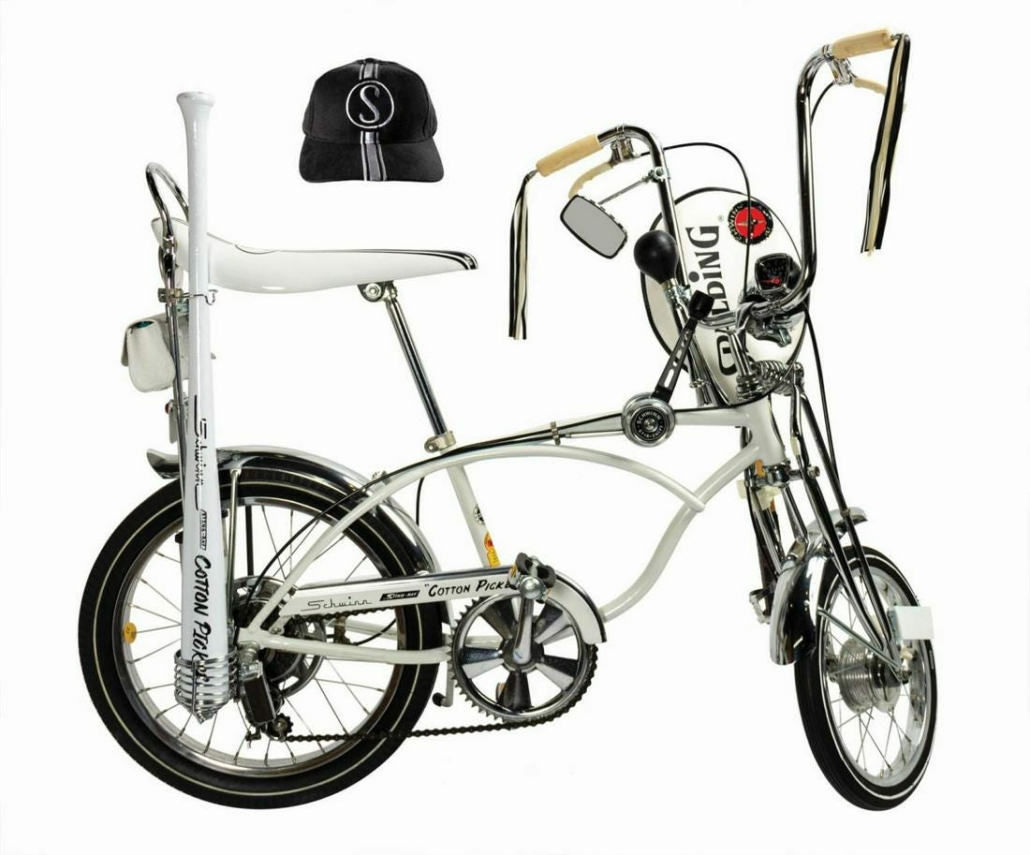
Bringing $5,700 plus the buyer’s premium in January 2021 at Van Eaton Galleries, the bike had everything buyers wanted in the Krate series from the banana seat with a metal Sting-Ray plate, sissy bar and ape hanger handlebars with molded grips, to dual hand-brake levers and more. It also boasted accessories such as a rearview mirror with checkerboard backing, speedometer/odometer, front light, squeeze horn, tennis racket holder on the front fork, a baseball bat holder on the back fork, and a plastic noisemaker card clipped in the front spokes.
Even though Schwinn shut down its hand-build shop in Chicago in 1971, marking the end of an era, Schwinn bicycles have made their mark in cycling culture and Americana. At one time, just about every child in the neighborhood had a Schwinn. Today, vintage models are still attracting bicycle enthusiasts, whether collectors or casual riders. Don’t you deserve a Schwinn?
# # #


